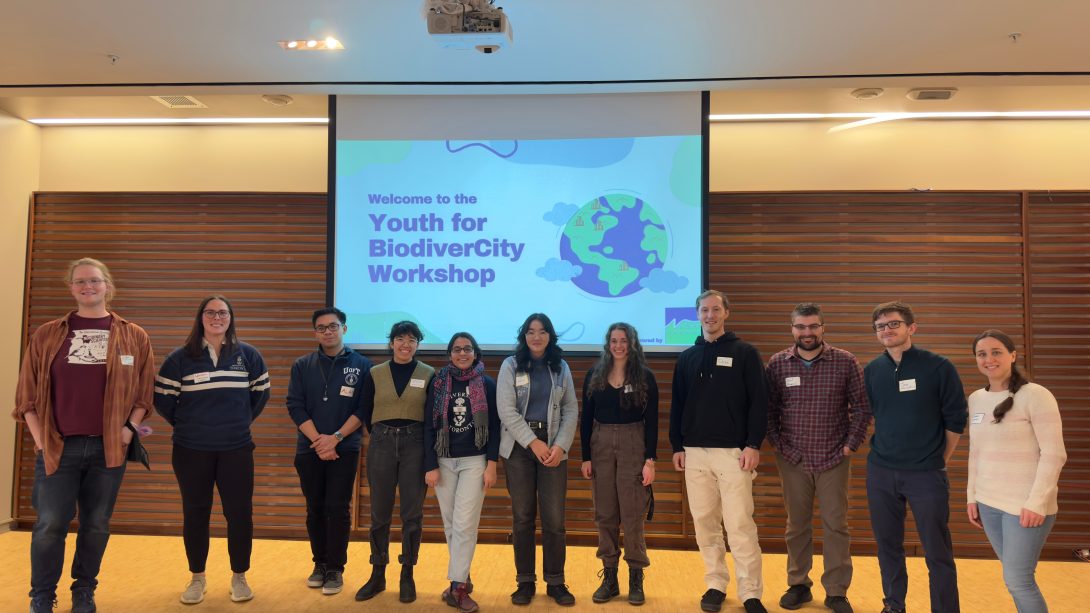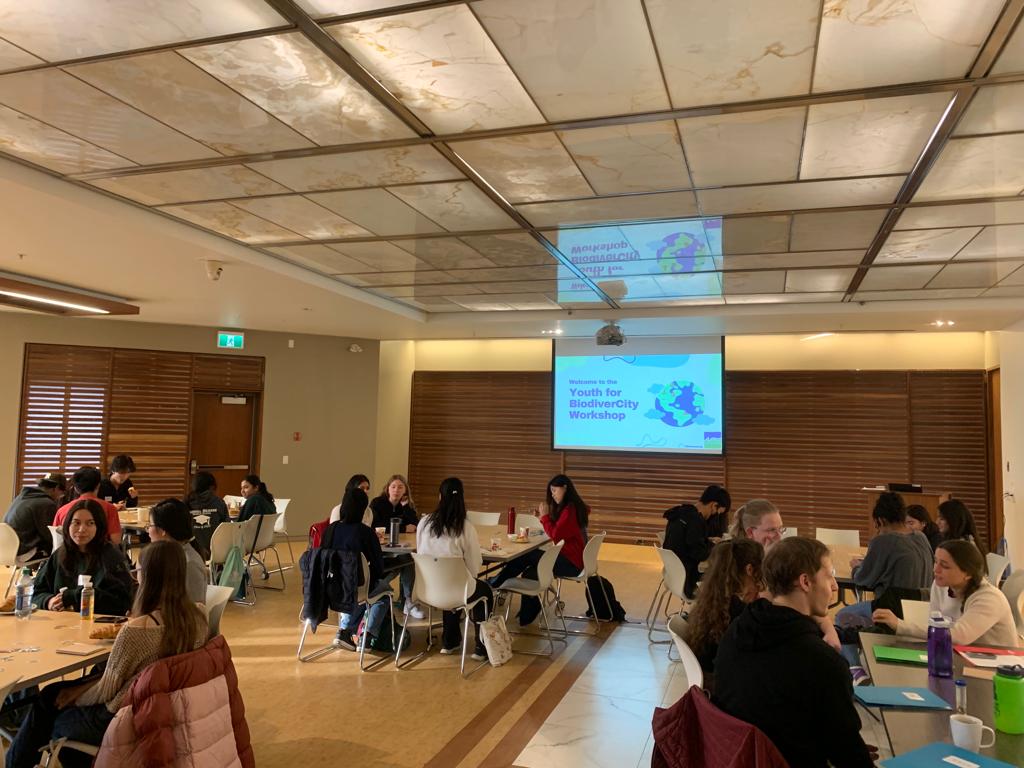PhD candidate, Lauren Lawson leads the "Youth for BiodiverCity" workshop
Lauren Lawson, PhD candidate in the Jackson Lab has recently organized and led EEB’s first interactive urban nature workshop for high school students.

The “Youth for BiodiverCIty” workshop was supported by Nature Canada – CLIF BAR® Young Nature Leaders Grant and was hosted on Saturday, November 25, 2023. During the workshop, 20+ participants and 11 EEB volunteers engaged in a variety of activities including short talks delivered by current MSc/PhD students and Post-doctoral fellows, interactive research tables, and small-group discussions to explore urban nature topics. The primary focus of the event was to provide an engaging platform for youth to gain hands-on experience and engage in meaningful conversations about their concerns and goals for the future of urban nature.
Through a series of exercises, presentations and discussions students explored the meaning and value of urban nature. Students examined the benefits that urban nature provides to people and ecosystems, as well as some of its challenges and opportunities for future generations in our cities. They also discussed the role of youth in improving and preserving urban natural areas through science and stewardship. The workshop ended with a reflection session where participants shared what they learned, who they connected with, and how they can continue to work together in their local communities.
Workshop objective:
- Engage youth with urban nature research in their city
- Empower youth to voice their concerns and hopes for the future of urban nature in their city
- Foster youth-to-youth networking and connections over local environmental issues
Interactive Research Tables
Students were able to interact with a range of field equipment and organisms collected within the GTA. On hand were camera traps, crayfish/fish traps, benthic invertebrate nets, field shovels, and soil core samplers. Preserved organisms included crayfish, plants and invertebrates. Recorded urban amphibian calls were also accessible. Additionally, students used this time to ask the research scientists about urban nature, research, environmental engagement, and university life in a small group setting.
Small-Group Discussions
Break-out sessions encouraged peer-to-peer discussion about youth feelings and goals for urban nature in Toronto. Each table combined 4-6 youth participants and 1-2 research scientist facilitators. Facilitators asked two main questions “how do youth currently interact with and perceive nature in the city?” and “how would youth like to interact with nature in the city?” this led into a series of sub-questions.
A list of youth concerns: litter, urban pollution, urban sprawl, societal lack of interest or concern for urban nature and a list of youth hopes: more biodiversity in urban parks, a need for urban nature education in school curriculum, more litter clean ups and litter reduction campaigns, winter opportunities for exploring urban nature were noted.

Workshop Acknowledgements
This workshop would not have been successful without the generous support and or participation of:
- All workshop participants
- EEB presenters and facilitators: Gloria Wang, Dale Pebesma, Joe Kawalec, Nikki Regimbal, Dr. Tiziana A. Gelmi Candusso, Ella Martin, David Murray-Stoker, Zira McFarlane, and Nehal Naik
- Lauren Lawson & Alan Bui
- Nature Canada CLIF BAR® Young Nature Leaders Grant
- Department of Ecology and Evolutionary Biology
- Toronto and Region Conservation Authority Youth Council
- University of Toronto EEB Graduate Student Association
